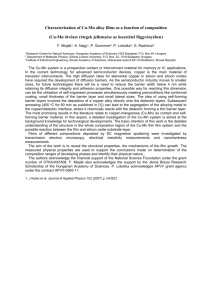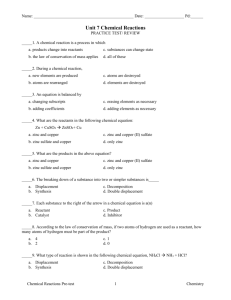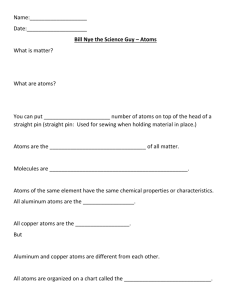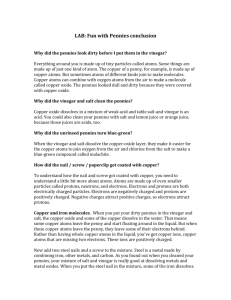Rule_Variation_1
advertisement
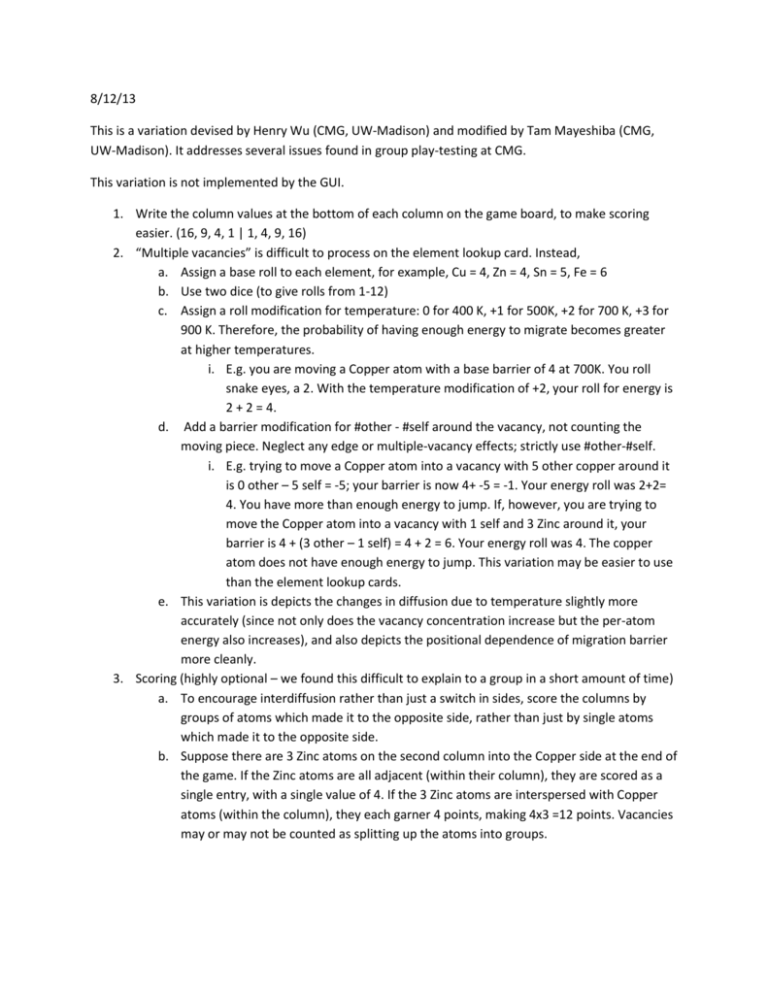
8/12/13 This is a variation devised by Henry Wu (CMG, UW-Madison) and modified by Tam Mayeshiba (CMG, UW-Madison). It addresses several issues found in group play-testing at CMG. This variation is not implemented by the GUI. 1. Write the column values at the bottom of each column on the game board, to make scoring easier. (16, 9, 4, 1 | 1, 4, 9, 16) 2. “Multiple vacancies” is difficult to process on the element lookup card. Instead, a. Assign a base roll to each element, for example, Cu = 4, Zn = 4, Sn = 5, Fe = 6 b. Use two dice (to give rolls from 1-12) c. Assign a roll modification for temperature: 0 for 400 K, +1 for 500K, +2 for 700 K, +3 for 900 K. Therefore, the probability of having enough energy to migrate becomes greater at higher temperatures. i. E.g. you are moving a Copper atom with a base barrier of 4 at 700K. You roll snake eyes, a 2. With the temperature modification of +2, your roll for energy is 2 + 2 = 4. d. Add a barrier modification for #other - #self around the vacancy, not counting the moving piece. Neglect any edge or multiple-vacancy effects; strictly use #other-#self. i. E.g. trying to move a Copper atom into a vacancy with 5 other copper around it is 0 other – 5 self = -5; your barrier is now 4+ -5 = -1. Your energy roll was 2+2= 4. You have more than enough energy to jump. If, however, you are trying to move the Copper atom into a vacancy with 1 self and 3 Zinc around it, your barrier is 4 + (3 other – 1 self) = 4 + 2 = 6. Your energy roll was 4. The copper atom does not have enough energy to jump. This variation may be easier to use than the element lookup cards. e. This variation is depicts the changes in diffusion due to temperature slightly more accurately (since not only does the vacancy concentration increase but the per-atom energy also increases), and also depicts the positional dependence of migration barrier more cleanly. 3. Scoring (highly optional – we found this difficult to explain to a group in a short amount of time) a. To encourage interdiffusion rather than just a switch in sides, score the columns by groups of atoms which made it to the opposite side, rather than just by single atoms which made it to the opposite side. b. Suppose there are 3 Zinc atoms on the second column into the Copper side at the end of the game. If the Zinc atoms are all adjacent (within their column), they are scored as a single entry, with a single value of 4. If the 3 Zinc atoms are interspersed with Copper atoms (within the column), they each garner 4 points, making 4x3 =12 points. Vacancies may or may not be counted as splitting up the atoms into groups.

